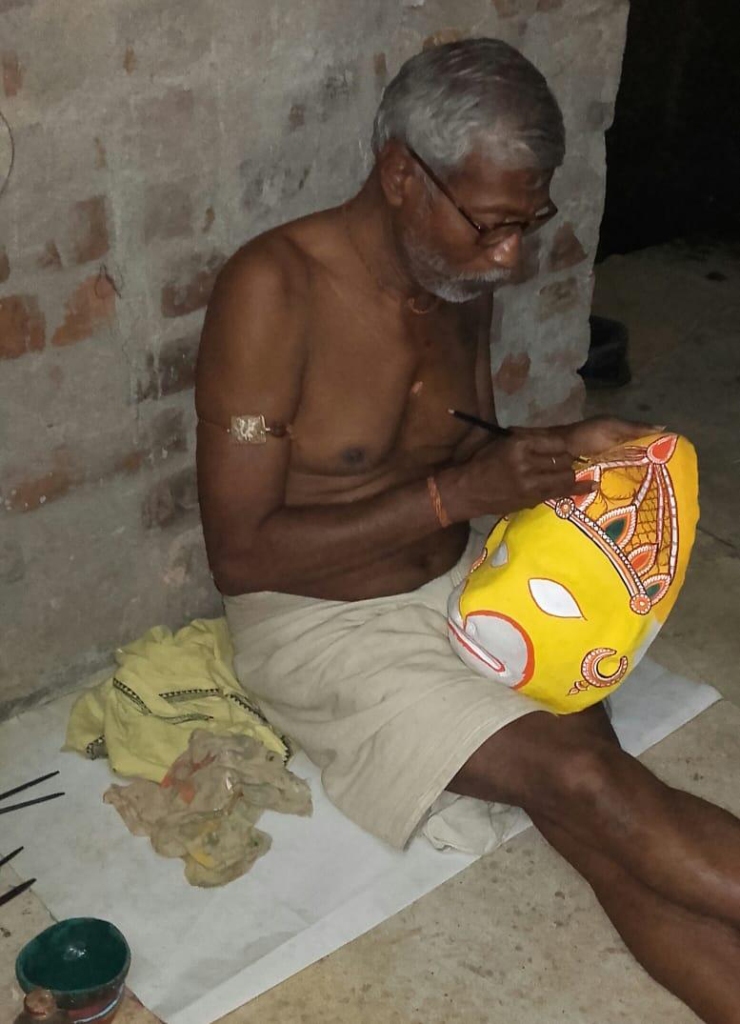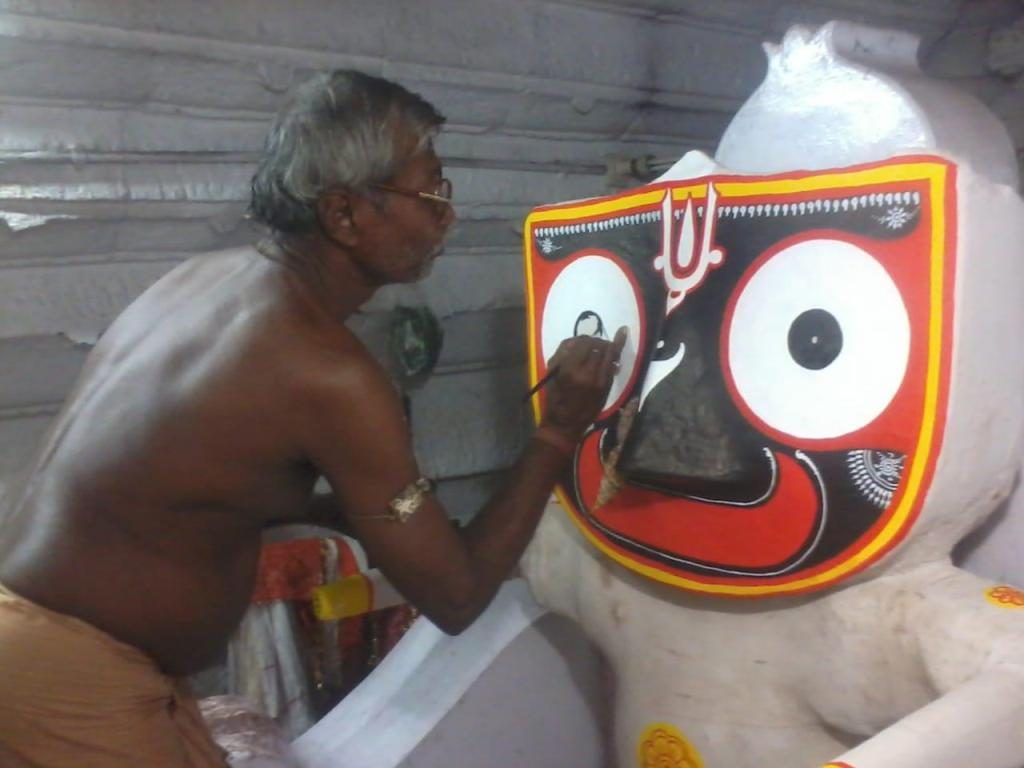Narayan Mohapatra, 70, a resident of Athagarh Gada Sahi and a sculptor-painter for the last 50 years, is an expert at painting and sculpting Lord Jagannath. He is a disciple of the late Shilapaguru Ananta Maharana who was a gold medallist in his profession. In fact, his entire family serves the Lord. Three generations of Narayan’s family have been engaged in carving idols, painting them and in making the Lord’s Pattachitra. Chaitali Shome of Orissa Post talks to the national award winner artiste on the eve of Ratha Yatra about his profession. Excerpts:
What is your secret service to the Lord?
We do Ashwalagi, a secret seva which is prepared with Jhuna, Rasi Oil or Sesame Oil, Camphor, Sri Karpur, Chandan, Agur and Chua. It is mixed and prepared as per specifications for the Lord. It’s done secretly for the Lord to make him look good. This preparation is evenly applied over the idol to repair damage, discolourations and to make it waterproof. After the Ashwalagi dries up, a special mixture of Tentuli seeds are crushed and glue is extracted from it. Patta or cotton fabric is cut and used to apply it on the Lord. After it dries up on Khalilagi Ekadasi Day, special Khadis are crushed and the Lepa is applied on the Lord’s idol.
What is the process of colouring the Lord?
We use Hingul (red colour), Haritala (yellow colour), Sankha (white colour) and black colour made from a diya which is lit with Sesame Oil. These colours are mixed with Kaintha Atha. All the colours are made five days before colouring the idol.

Can you describe your experience while colouring it?
If something goes wrong the Lord appears before me. This is something I have experienced two to three times. I know people may not believe it, but it’s the Lord who makes me feel divine. Many a time I have cried inconsolably.
What rituals do you follow during the ‘Anasara’ period?
We keep away from ‘Tamasik’ food like non-veg items, onion, garlic and oil. We Servitors eat only once in a day. The food is cooked only in the temple. Our homes are cleaned and we follow all rituals amidst a ‘Satwik’ lifestyle.
From where do you get the materials for colouring the Lord and do women of your family participate in it?
We collect it from Ayurvedic stores after we show them our artisan ID-card. My wife Sanjukta Mohapatra dips a conch shell for four days. After that she crushes and grinds it and then cooks it. Hartal is crushed and it’s scraped for eight days with a little water to get the yellow colour. It’s then dried in the sun. We use tundi or face cover as the gas from these mixtures is poisonous. Women eat only once a day and no outside food is allowed.
Do you like to open an institution to teach artisans in future?
Definitely, but money is the main issue. We have not received any help from the government or local authorities. I think it’s high time the government took steps to help the families of ‘Chitrakars’. Otherwise, the art will vanish with us. We are Chitrakars and we will die holding our brushes.
